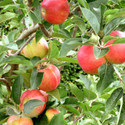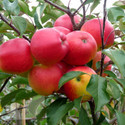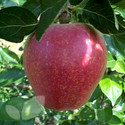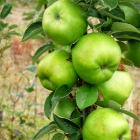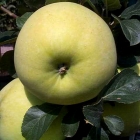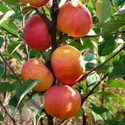An Easy Guide to the Recognition of the More Common Pests and Diseases
Aphids
Small winged or wingless insects found clustered together on leaves and shoots in large numbers. Often coloured green (greenfly) but other colours possible. Cause curling and distortion of leaves and growing tips. Sometimes, especially in the case of plums ‘honeydew’ is excreted and ‘sooty’ type moulds then on the leaves and shoots.
Caterpillars
Several species attack fruit trees but the most common are caterpillar of the Winter Moth. The small greenish caterpillars have a dark stripe along their backs and three stripes on each side and arch their backs ‘Loopers ‘ when moving. They feed on young leaves. Flowers and fruitlets in the spring sometimes causing almost total loss of leaves. Gooseberry bushes are often defoliated by severe attacks of the Gooseberry Sawfly. The caterpillars firstly feed in the middle of the bushes, thus escaping detection. The caterpillars are green with a black head and black spots.
Codling Moth
The caterpillars are not easily seen as they live inside the apples, but as the fruit develops a conspicuous red ring often encircles the pests point of entry and brown frass may also be seen extruding. On cutting an infected fruit open the small pinkish caterpillar with a brown head and black spots may be seen amongst the internal damage.
Raspberry Beetle
The beetle lay their eggs in the flowers of Raspberries and other cane fruit. These hatch into greyish grubs which tunnel into the ripening fruit. Very objectional in fresh fruit.
Red Spider Mite
These mites are microscopic but can cause serious damage to the foliage of apples and plum. In such cases the leaves may be bronzed and fall prematurely. The mites live within a whiteish web on the underside of the leaves feeding on the sap. The mites overwinter as winter eggs laid in crevices on the bark. Fortunately, natural predators usually give adequate control in gardens.
Apple Canker
The canker first appears as sunken bark close to buds or wounds but as it develops it becomes elliptical extending lengthwise along the stem. Distortion and swelling occurs and the bark is killed and takes an ‘oyster shell’ appearance. Encircled shoots are killed. Established cankers produce spores which infect new parts of the tree.
Brown Rot
Brown rot occurs as brown decaying patches (which later bear white concentric rings of spores) on ripening fruits of apple, pear and plum. Infected fruit usually drop off but sometimes they remain attached to the tree and become mummified. In this case remove them as soon as possible.
American Gooseberry Mildew
The young leaves and shoots are covered with a thin felt like layer of fungus. Often fruits are attacked. The diseased regions later turn brown.
Apple Mildew
Growths which are infected with mildew bear very small curled leaves which are covered with grey white felty powder. Badly infected shoots are often leafless and can be easily recognised and removed in winter, when they appear shrivelled and whiteish brown all over.
Peach Leaf Curl
Just after bud-burst, whiteish green swellings appear on the young leaves, on the upper surface they appear downy white. The swellings later turn reddish colour and the infected portion of the leaf becomes very thickened and distorted.
Scab (Black Spot)
Scab infection attacks both leaves and fruit of apple and pear, small dark spots appear which then increase in size. These spots appear which then increase in size. These spots soon produce more infectious spores which are released to start new infection. Often one large spot is encircled by numerous small spots. The disease is worse in wet humid seasons and the fruit can be severely cracked, marked and distorted. In bad cases some defoliation can take place.

